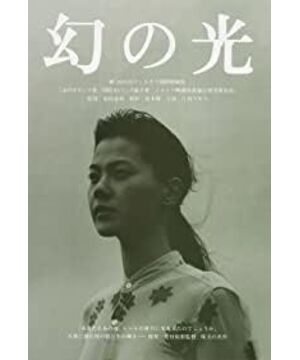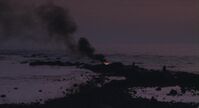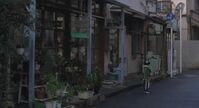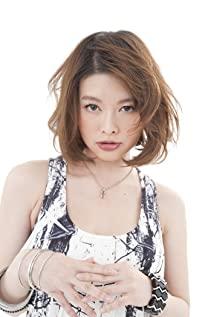The unique artistic temperament exuded by the visual language in the film makes people feel sorrowful and impressive. It is calm and objective, yet without sacrificing meticulous restraint, it fully displays the grief, depression, fragility, and loneliness of Yumiko's inner feelings after the bereavement.
First of all, in terms of lens language, the biggest feature of the film is a large number of fixed long shots, which is inseparable from the director's narrative attitude. The director uses a lot of fixed shots. He adopts an attitude of alienation and non-closeness. The camera keeps a certain distance from the characters. He rarely uses close-up and close-ups. He deliberately cuts off the direct emotional communication between the audience and the characters, so as to objectively make the characters’ inner emotions and life state look the same. The underground spring water is normal, flowing naturally from the almost stagnant fixed long lens. Such restrained and calm lens language abounds throughout the film. In the suspended fixed shots one after another, time almost ceases, and a heavy sense of stagnation and distance brings the audience into inextricable depression and sadness. At the same time, the director gave up the use of close-ups at critical moments, blocking the audience's path to identify with the role. And it is this kind of barrier that allows the audience to actively mobilize all their perceptions and gradually walk into the inner world of the characters starting from the feelings. This is why it is more powerful than close-ups. Since most scenes in movies are fixed shots, the camera positions are often placed far away. So the front and back shots and two panning shots of a group of characters are particularly precious. Both panning shots played a role in releasing emotions in the film, and brought rare comfort to the audience in the overall atmosphere of depression and sadness.
The director has also considered the selection of scenes and the use of light. So the director chose some scenes that are both aesthetic and symbolic, such as tunnels, window sills, stairs, terraces and other places that can reflect changes in light. Hirokazu Kee and his photography director insisted on using only natural light effects and rejected the rigid artificial lighting of the studio. At the same time, many lenses are deliberately underexposed, presenting a dim environment, deliberately in contrast to the brighter and brighter light of the film. Many shots were taken under severe backlighting, because he wanted to capture a feeling between the boundary of light and shadow. The title of the movie says it all. Its theme is light, so the movie itself is also about light, how light falls or is blocked, how bright or obscured. Such an extreme concept of restraint exists in the entire film. It was born in the small and indispensable things. This is the visual way that Hirokazu Ke tells the story.
In addition, the choice of costumes of the characters and the presentation of the space are also quite interesting. In the film, Yumiko wears black or dark clothes most of the time, except for a white shirt when she gets married. This is also in line with the film's repressive and sad tone. In the last scene, she wore a white and blue dress that made the audience shine, which also meant that she began to gradually come out of the trauma of the past. In terms of space setting, because of the film's repressive emotional tone, the space setting is mostly in dark and narrow rooms. With natural light effects and backlit shooting, the film therefore presents a sense of repression and self-enclosed space characteristics. Therefore, the unified dark setting not only compensates for the jump of story time in form, but also matches the emotions of the characters in content, strengthens the self-enclosure of the heroine’s psychological and emotional space, and makes the real reappearing physical space become a kind of abstraction. The expressive emotional space and intentional space give the real scene space a special symbolic metaphor.
"Phantom No Light" is the first plot of Hirokazu Ee, which shows the director's extraordinary insight and sensibility for human nature and life. The film adopts a narrative method that is alienated, calm and not close, and uses a large number of fixed-length lenses to create a quiet and contemplative atmosphere. The audience's heart is firmly grasped, so that it can dive deep into the emotions in the image, and in silence Follow the protagonist to feel the latent weight of sadness in the heart, on the face, and diffused in the air in the time of
.











